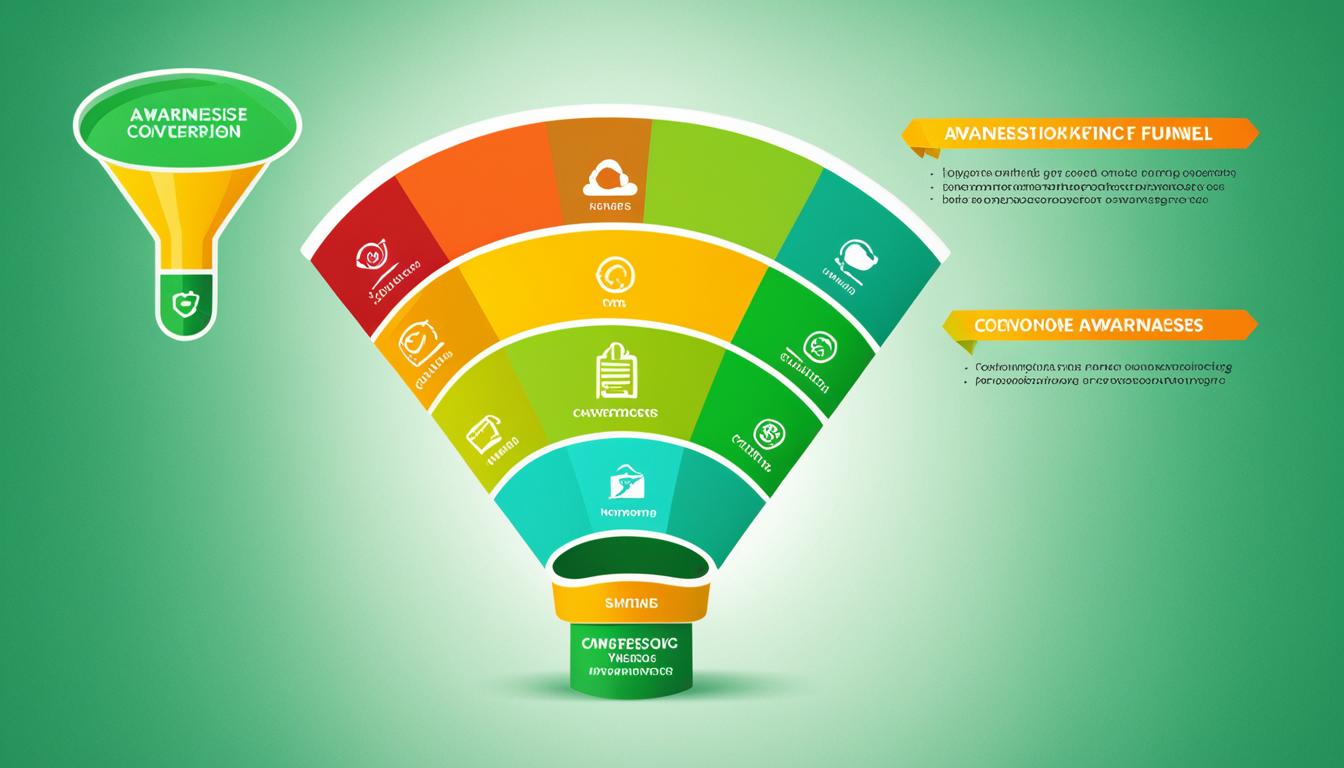Bunnings, a leading retailer in the home improvement industry in Australia and New Zealand, has implemented a groundbreaking marketing strategy in 2024. This case study explores the various facets of Bunnings’ marketing approach and examines how it has revolutionized the retail dynamics within the sector. From advertising tactics to promotional plans, branding strategies to digital marketing initiatives, Bunnings has left no stone unturned in its pursuit of marketing excellence.
By studying Bunnings’ marketing strategy, we can gain valuable insights into the key elements that contribute to its success. From understanding their competitive marketing methods to analyzing their market positioning strategy, we can delve deeper into how Bunnings has positioned itself as a market leader in the home improvement industry.
Throughout this case study, we will explore the evolution of Bunnings, its market analysis, current marketing activities, market segmentation and targeting strategies, positioning tactics, and the marketing mix employed by the company. Additionally, we will provide recommendations to further enhance Bunnings’ marketing strategy.
Key Takeaways:
- Bunnings has implemented an innovative marketing strategy that has transformed the retail dynamics in the home improvement industry.
- The company focuses on various marketing elements, including advertising, branding, digital initiatives, and competitive methods.
- Market analysis and segmentation play a vital role in Bunnings’ success, allowing them to target a diverse customer base effectively.
- The company’s market positioning strategy revolves around emphasizing customer satisfaction, a wide product range, and exceptional service.
- Bunnings’ marketing mix, consisting of product, price, place, and promotion, contributes to its overall success and growth in the industry.
The History and Evolution of Bunnings
Bunnings, a prominent player in the home improvement industry in Australia and New Zealand, has a fascinating history that spans over a century. It all began in the 1800s when Bunnings was established as a small hardware shop, catering to the needs of local customers. From its humble beginnings, Bunnings has grown and evolved, establishing itself as a household name in the retail industry.
Bunnings’ growth can be attributed to a series of strategic acquisitions and mergers that have shaped its trajectory over the years. These acquisitions have played a crucial role in expanding Bunnings’ reach and diversifying its product offerings. By acquiring well-established home improvement companies, Bunnings has been able to tap into new markets and access a broader customer base.
One of Bunnings’ notable acquisitions was the purchase of the Homebase stores in the United Kingdom in 2016. This move marked Bunnings’ entry into the European market and showcased its ambition for international expansion. By leveraging the expertise and resources of acquired companies, Bunnings has been able to enhance its competitive edge and consolidate its position as a market leader.
Throughout its history, Bunnings has exemplified a resilient spirit and a commitment to innovation. The company has continuously adapted to changing consumer demands and market trends, ensuring its relevance in the ever-evolving retail landscape. Bunnings’ evolution is a testament to its ability to seize opportunities, embrace new technologies, and deliver exceptional customer experiences.
Their dedication to meeting customer needs has been the driving force behind Bunnings’ growth and success. By providing a comprehensive range of high-quality products, excellent customer service, and extensive store networks, Bunnings has earned the trust and loyalty of millions of customers.
In the next section, we will delve into a detailed market analysis of Bunnings, examining its competition, market share, and customer base, providing valuable insights into the effectiveness of their marketing strategy.
Bunnings Market Analysis
Bunnings operates in a highly competitive market, with several players vying for market share. The company has established a strong brand name and customer base over the years. Analyzing the market dynamics, competition, and Bunnings’ market share provides valuable insights into the effectiveness of their marketing strategy.
Market Dynamics
As a leading retailer in the home improvement industry, Bunnings faces intense competition from both traditional brick-and-mortar stores and online retailers. The market is driven by consumer demand for quality products, competitive pricing, and exceptional customer service.
Bunnings has successfully navigated these dynamics by consistently delivering on customer expectations and investing in market research to identify emerging trends and changing preferences. Their ability to adapt to market dynamics has helped them maintain a strong position in the industry.
Competition
The competition in the home improvement market is fierce, with several key players vying for market share. Major competitors include Home Depot, Lowe’s, and local hardware stores.
Bunnings differentiates itself from competitors through its extensive product range, competitive pricing, and emphasis on customer service. By offering a wide selection of quality products at competitive prices, Bunnings has managed to establish a loyal customer base and stay ahead of the competition.
Market Share
Bunnings has consistently gained market share in the home improvement industry. Their strong brand reputation, wide product range, and customer-centric approach have contributed to their success in attracting and retaining customers.
According to recent industry reports, Bunnings currently holds a significant market share, making them a dominant player in the home improvement sector. Their ability to capture market share can be attributed to their effective marketing strategy and commitment to meeting customer needs.
Customer Base
Bunnings has built a loyal customer base over the years. Their customer-centric approach, focus on exceptional service, and commitment to product quality have resonated with consumers.
The Bunnings customer base consists of a diverse range of individuals, including homeowners, professional DIY enthusiasts, and contractors. Bunnings has successfully segmented their customer base and tailored their marketing efforts to address the unique needs and preferences of each segment.
Building strong relationships with customers and providing personalized experiences has been a key factor in expanding their customer base and ensuring customer loyalty.
| Market Analysis | Competition | Market Share | Customer Base |
|---|---|---|---|
| Analyzing market dynamics and effectiveness of marketing strategy | Fierce competition from major players such as Home Depot and Lowe’s | Bunnings holds a significant market share | Diverse customer base including homeowners, DIY enthusiasts, and contractors |
Current Marketing Activities of Bunnings
Bunnings is renowned for its comprehensive marketing approach across various channels. By utilizing a mix of traditional and digital advertising strategies, sponsorship initiatives, and a strong social media presence, Bunnings effectively reaches its target audience and promotes its products and services.
When it comes to traditional advertising, Bunnings strategically utilizes television, radio, and print media to enhance brand visibility and connect with a wide range of consumers. Their carefully crafted advertisements effectively showcase the diverse range of products available at Bunnings stores.
Online advertising also plays a key role in Bunnings’ marketing activities. Leveraging the power of digital platforms, Bunnings reaches customers through targeted online campaigns, engaging website content, and well-placed advertisements that reach consumers as they browse the internet.
In addition to advertising, Bunnings actively participates in sponsorship activities. By partnering with local community events, sports teams, and charities, Bunnings reinforces its commitment to supporting the communities it serves. These sponsorships not only generate brand awareness but also help foster positive brand associations among consumers.
Bunnings understands the significance of maintaining a strong social media presence in today’s digital landscape. Through platforms such as Facebook and Instagram, Bunnings engages with its audience, shares inspiring DIY projects, provides helpful tips, and showcases new products. The brand’s active social media presence enables Bunnings to establish a genuine connection with its customers and gain valuable insights and feedback.
Bunnings Social Media Channels
- Facebook: With millions of followers, Bunnings’ Facebook page is a hub for inspiration, tutorials, and engaging content related to home improvement and gardening.
- Instagram: Bunnings’ Instagram account is a visual delight, featuring captivating images of products, DIY projects, and creative ideas to transform homes and outdoor spaces.
Bunnings Sponsorship Initiatives
In line with their commitment to supporting local communities, Bunnings sponsors a variety of events, organizations, and initiatives. From local school programs to major sporting events, Bunnings’ sponsorships create positive associations with their brand and showcase their dedication to community involvement.
| Sponsorship Initiative | Description |
|---|---|
| School Garden Grants | Bunnings provides grants to schools to develop and maintain gardens, fostering environmental awareness and educational opportunities. |
| Community BBQs | Bunnings hosts regular barbeque events at their stores, with proceeds donated to local charities and community organizations. |
| Sporting Event Sponsorships | Bunnings sponsors various sporting events at local, regional, and national levels, nurturing a sense of community spirit and supporting athletes. |
The combination of traditional advertising, digital marketing efforts, sponsorship activities, and a strong social media presence enables Bunnings to maintain its market position and effectively engage with its target audience.
Bunnings Market Segmentation and Targeting
Bunnings, as a leading retailer in the home improvement industry, implements a comprehensive market segmentation strategy to effectively target its diverse customer base. By analyzing demographic, geographic, and psychographic factors, Bunnings ensures its marketing efforts resonate with various segments of the market.
Demographic Segmentation
Bunnings caters to a wide range of customer demographics. They target homeowners seeking to improve their living spaces, professional DIY enthusiasts looking for quality tools and materials, and individuals from various age groups, genders, and income levels. By understanding the unique needs and preferences of different demographic groups, Bunnings tailors its marketing messages and product offerings to meet their specific requirements.
Geographic Segmentation
Bunnings recognizes the importance of geographic segmentation in its marketing strategy. The company strategically targets both urban and regional areas, acknowledging that the needs and preferences of customers can vary based on location. This allows Bunnings to adapt its product assortment and promotional activities to suit the specific demands of different regions, ensuring its stores are attractive to consumers in various locations.
Psychographic Segmentation
Bunnings considers psychographic segmentation as a vital element in its marketing approach. By understanding the attitudes, interests, and lifestyles of its target audience, Bunnings is able to create compelling marketing campaigns that resonate with their customer’s values. Their focus on promoting a DIY culture and providing customers with the tools and resources to take on projects aligns with the psychographic preferences of their target audience.
Through effective market segmentation, Bunnings maximizes its marketing efforts by reaching the right customers with tailored messages and offerings. This customer-centric approach allows Bunnings to maintain a strong market presence and cater to the diverse needs of its customer base.
Bunnings Positioning Strategy
Bunnings, a prominent retailer in the hardware and home improvement sectors, has strategically positioned itself in the market by implementing a robust positioning strategy. This strategy allows Bunnings to distinguish itself from competitors, build a strong brand image, and maintain a competitive advantage.
One key aspect of Bunnings’ positioning strategy is its commitment to offering quality products at competitive prices. Customers recognize Bunnings as a trusted provider of reliable and durable home improvement solutions. By consistently delivering high-quality products, Bunnings has established a reputation for excellence in the industry.
In addition to product quality, Bunnings places a strong emphasis on customer satisfaction. The company strives to provide exceptional customer service and ensure that customers have a positive experience at every touchpoint. Bunnings’ friendly and knowledgeable staff, coupled with their commitment to addressing customer needs, has contributed to a positive brand image and increased customer loyalty.
Furthermore, Bunnings differentiates itself by offering a wide product range that caters to various customer preferences and requirements. From tools and hardware to gardening and outdoor living supplies, Bunnings aims to be a one-stop-shop for all home improvement needs. This extensive product selection allows Bunnings to attract a diverse customer base and meet the demands of different market segments.
Whether you are a DIY enthusiast, a professional craftsman, or an ordinary family seeking to beautify their home, you can find products that meet your needs here. Customers can create DIY products based on their individual requirements. For example, they can customize personalized neon signs according to the layout, style, and preferences of their rooms. Whether it’s modern simplicity or vintage luxury, you can find custom neon signs designed to match.

Through this service, customers can not only realize the personalized expression of home decoration but also experience the fun and sense of accomplishment of creation in the DIY process, making the home environment more in line with their taste and lifestyle.
Bunnings’ competitive advantage lies in its ability to consistently deliver on their brand promises and provide value to customers. Their positioning strategy aligns with their core values and resonates with their target audience, allowing them to stay ahead of competitors in the market.
Bunnings’ Competitive Advantage
| Key Factors | Bunnings | Competitors |
|---|---|---|
| Product Quality | High-quality, reliable products | Varying product quality |
| Customer Service | Friendly, knowledgeable staff | Inconsistent customer service |
| Wide Product Range | Diverse selection catering to different needs | Limited product range |
The table above highlights Bunnings’ competitive advantage over its competitors. Bunnings’ focus on product quality, exceptional customer service, and a diverse product range differentiates them from other players in the industry. This competitive advantage contributes to Bunnings’ success in maintaining its market positioning and attracting a loyal customer base.
Bunnings Marketing Mix
In order to effectively reach its target audience and achieve its marketing objectives, Bunnings implements a comprehensive marketing mix strategy that encompasses the key elements of product, price, place, and promotion.
Product Strategy
Bunnings offers a diverse range of high-quality products to cater to the varied needs of its customers. Whether it’s tools, building materials, gardening supplies, or home decor, Bunnings ensures that it provides a wide selection to meet the demands of both DIY enthusiasts and professional contractors. By offering a broad product range, Bunnings aims to establish itself as a one-stop destination for all home improvement needs.
Pricing Strategy
Bunnings adopts a competitive pricing strategy to attract customers and maintain its market position. By offering products at affordable prices, Bunnings aims to provide value for money and attract price-conscious consumers. Additionally, Bunnings regularly carries out market research and competitor analysis to ensure that its pricing remains in line with industry standards and customer expectations.
Distribution Strategy
To ensure maximum accessibility and convenience for customers, Bunnings maintains an extensive distribution network. With numerous retail stores strategically located across Australia and New Zealand, Bunnings makes its products readily available to customers in both urban and regional areas. Furthermore, Bunnings offers an online shopping platform, allowing customers to conveniently browse and purchase products from the comfort of their own homes.
Promotion Strategy
Bunnings employs a comprehensive promotion strategy to create brand awareness and drive sales. Through traditional advertising channels such as television, radio, and print media, as well as online advertising, Bunnings effectively reaches its target audience. Additionally, Bunnings leverages social media platforms like Facebook and Instagram to engage with customers, share product updates, and run targeted promotional campaigns.
In summary, Bunnings’ marketing mix encompasses a well-rounded approach, with a focus on delivering a wide range of products, competitive pricing, extensive distribution channels, and strategic promotional activities. By effectively utilizing these elements, Bunnings is able to differentiate itself in the market, attract customers, and maintain its competitive edge.
Recommendations for Improving Bunnings’ Marketing Strategy
To further enhance their marketing strategy, Bunnings can consider implementing the following recommendations:
1. Product Expansion
Bunnings can explore opportunities for expanding their product range to cater to evolving customer preferences. By introducing new and innovative products, they can attract a wider customer base and stay ahead of the competition. Conducting market research and analyzing customer demand will help identify potential areas for product expansion.
2. Digital Marketing Enhancement
Bunnings should invest in enhancing their digital marketing efforts to reach a wider audience. This includes optimizing their website for search engines, developing engaging content, and utilizing social media platforms effectively. Implementing targeted online advertising campaigns and leveraging influencer partnerships can also increase brand visibility and attract online customers.
3. Customer Experience Improvement
Improving the in-store and online customer experience is crucial for retaining and attracting customers. Bunnings can achieve this by focusing on better store layouts, ensuring adequate product availability, and enhancing customer service. Additionally, Bunnings should invest in user-friendly website design, intuitive navigation, and accessible product information to provide a seamless online shopping experience.
By implementing these recommendations, Bunnings can strengthen their marketing strategy, drive customer engagement, and achieve sustainable growth in the competitive home improvement market.
| Recommendations | Action Items |
|---|---|
| Product Expansion | Conduct market research to identify potential areas for product expansion. |
| Digital Marketing Enhancement | Optimize website for search engines, develop engaging content, and leverage social media platforms effectively. |
| Customer Experience Improvement | Improve store layouts, ensure product availability, enhance customer service, and invest in user-friendly website design. |
Conclusion
In conclusion, Bunnings has proven to be a frontrunner in the home improvement sector through its effective and innovative marketing strategy. By focusing on building a strong brand image, implementing a well-rounded marketing mix, and targeting their diverse customer base, Bunnings has successfully positioned itself as a leader in the industry. Their comprehensive approach, encompassing advertising tactics, promotional plans, and digital marketing initiatives, has allowed them to continuously shape and redefine the retail dynamics of the sector.
While Bunnings’ current marketing strategy has yielded impressive results, there is still room for improvement. By considering the recommended enhancements, such as expanding their product range and enhancing their digital marketing efforts, Bunnings can further solidify their market position. Additionally, strengthening the customer experience, both in-store and online, will contribute to fostering loyalty and driving future growth.
Overall, Bunnings’ commitment to delivering quality products, competitive pricing, and exceptional customer service has set them apart from their competitors. With their forward-thinking marketing approach, Bunnings will continue to thrive and shape the home improvement industry for years to come.






